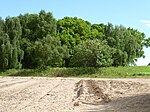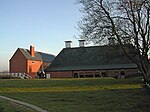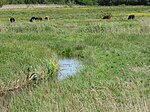Suffolk Coastal (UK Parliament constituency)
Constituencies of the Parliament of the United Kingdom established in 1983Parliamentary constituencies in SuffolkUse British English from March 2020

Suffolk Coastal (sometimes known as Coastal Suffolk) is a parliamentary constituency in the county of Suffolk, England which has been represented in the House of Commons of the UK Parliament since 2010 by Thérèse Coffey, a Conservative Member of Parliament. She served as Secretary of State for Environment, Food and Rural Affairs from October 2022 to November 2023
Excerpt from the Wikipedia article Suffolk Coastal (UK Parliament constituency) (License: CC BY-SA 3.0, Authors, Images).Suffolk Coastal (UK Parliament constituency)
East Suffolk
Geographical coordinates (GPS) Address Nearby Places Show on map
Geographical coordinates (GPS)
| Latitude | Longitude |
|---|---|
| N 52.15 ° | E 1.5 ° |
Address
IP12 2EL East Suffolk
England, United Kingdom
Open on Google Maps







